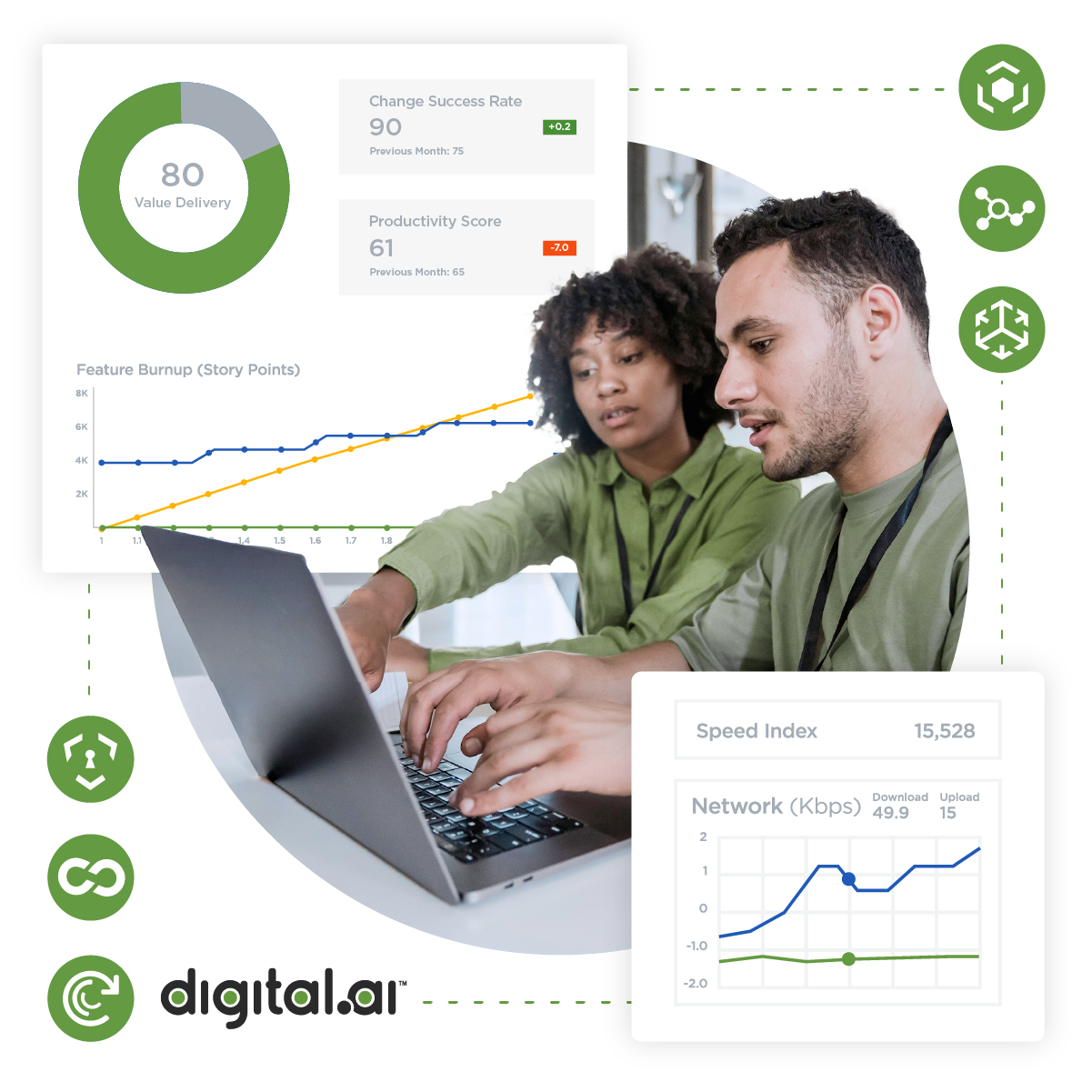Table of Contents
Related Blogs
Performance testing is an indispensable and yet somehow often overlooked component of mobile application development. It is more than just measuring speed; it’s about guaranteeing a smooth, responsive user experience across a wide range of devices and network conditions.
Well-performing applications are crucial for user retention. Frustration with slow load times or frequent crashes can quickly drive users away. Additionally, a poor-performing app can tarnish a brand’s reputation, impacting trust and loyalty. On the other hand, high-performing apps will significantly enhance user engagement and conversions, leading to increased revenue.
Beyond these direct benefits, performance testing is essential for gaining a competitive edge. In today’s saturated app market, delivering superior user experiences through optimal performance will set your app apart. Furthermore, by identifying and addressing performance bottlenecks early in the development process, you can save time and resources while ensuring a high-quality final product.
Key Metrics in Mobile App Performance Testing
To ensure optimal performance and user satisfaction, the following key metrics should be closely monitored during mobile app performance testing:
- Response Time: Measures the elapsed time between a user’s action and the app’s response. A swift response time enhances user satisfaction and engagement.
- Throughput: Measures the number of transactions or requests an app can handle within a specific timeframe. It’s essential for apps handling high traffic or concurrent users. A high throughput indicates the app’s ability to manage heavy loads without performance degradation.
- Resource Utilization: Monitoring resource utilization, including CPU, memory, and storage, is crucial for optimizing app performance. Excessive resource consumption can lead to slowdowns, crashes, or even battery drain. Efficient resource management ensures optimal performance and a smooth user experience.
- Network Performance: Directly impacts app responsiveness. Metrics like download speed, upload speed, and latency are essential for evaluating network conditions. Testing under various network scenarios, such as Wi-Fi, 3G, and 4G, is vital for identifying potential performance issues.
- Battery Drain and Consumption: Battery life is a significant concern for mobile devices. Measuring battery consumption during app usage helps identify power-hungry components and optimize energy efficiency. Reducing battery drain improves user satisfaction and extends device usage time.
- Load Testing: Simulates real-world user behavior by subjecting the app to increasing loads. It helps identify performance bottlenecks and determine the app’s capacity to handle peak usage. Load testing is essential for ensuring the app can handle expected user traffic without performance degradation.
- Stress Testing: Pushes the app beyond its normal operating limits to identify failure points and system stability. It helps uncover vulnerabilities and assess the app’s ability to recover from unexpected conditions. Stress testing is crucial for ensuring the app’s reliability and robustness.
Tools and Frameworks for Mobile App Performance Testing
Selecting the right tools and frameworks is essential to conduct thorough and efficient mobile app performance testing. The landscape of available options is vast, with each tool offering unique strengths and capabilities. Here’s a breakdown of key categories:
Open-Source Tools
- Appium: A popular choice for cross-platform automation, Appium supports iOS, Android, and Windows apps. It offers flexibility and customization options.
- JUnit: While primarily a Java testing framework, JUnit can also be used to perform performance testing of components within Android apps.
- XCTest: Apple’s native testing framework for iOS apps, XCTest provides a solid foundation for performance testing.
Commercial Tools
- Digital.ai Continuous Testing: Validates critical elements of application performance on real cloud devices. This includes navigation times and spikes in CPU, memory, and battery usage.
- LoadUI: While primarily for web applications, LoadUI can be used for mobile app performance testing, especially for backend load testing.
- BrowserStack: Provides access to a real device cloud for testing app performance on different devices and network conditions.
Specialized Performance Testing Tools
- Gatling: Designed for high-performance load testing, Gatling can simulate heavy user loads on mobile apps.
- JMeter: Although JMeter is primarily for web applications, it can be adapted for mobile app performance testing, especially for backend load testing.
Types of Mobile App Performance Testing
Load Testing
Load testing determines an app’s behavior under expected user loads. It simulates a specific number of concurrent users to measure response times, throughput, and resource utilization. The goal is to identify performance bottlenecks before the app goes live.
Stress Testing
Stress testing pushes an app beyond its normal operating capacity to evaluate its behavior under extreme conditions. It helps uncover system limitations and assess the app’s stability and error-handling mechanisms. This type of testing is crucial to ensure the app can handle unexpected surges in user traffic or resource constraints.
Endurance Testing
Endurance testing evaluates an app’s performance over an extended period under sustained load. It helps identify potential performance degradation, memory leaks, or resource exhaustion issues that might occur during prolonged usage. Endurance testing is essential for apps designed for continuous operation.
Spike Testing
Spike testing simulates sudden, sharp increases in user load to assess an app’s ability to handle traffic spikes. It helps identify the app’s responsiveness and recovery time after a sudden surge in users. This type of testing is valuable for apps that experience peak usage periods.
Volume Testing
Volume testing focuses on the app’s performance when handling large amounts of data. It helps identify how the app responds to increased data volumes and whether it can maintain acceptable performance levels. This type of testing is crucial for apps that deal with substantial data processing.
Steps in Mobile App Performance Testing
- Requirement Analysis: Thoroughly understanding the app’s performance goals, user expectations, and key performance indicators (KPIs) is crucial. This involves analyzing functional requirements, non-functional requirements, and performance acceptance criteria.
- Planning and Strategy: Develop a comprehensive performance testing strategy outlining objectives, scope, test environment, tools, resources, and timelines. Identify key performance metrics to be measured and establish performance benchmarks.
- Designing Test Cases: Create detailed test cases covering different performance scenarios, user loads, data volumes, and network conditions. Define test data, expected results, and test environments.
- Setting Up the Test Environment: Configure the necessary hardware, software, and network infrastructure to simulate real-world conditions. Install and configure performance testing tools and integrate them with the app.
- Executing Tests: Execute performance test cases according to the plan, monitoring test execution, capturing performance metrics, and identifying any issues or deviations from expected results.
- Monitoring and Analysis: Analyze performance test results to identify performance bottlenecks, evaluate system behavior under different loads, and compare results against established benchmarks. Correlate performance data with other system metrics to pinpoint issues.
- Result Reporting: Prepare a detailed performance test report summarizing findings, recommendations, and actionable insights. Clearly communicate test results to relevant stakeholders, including performance metrics, graphs, and charts.
- Optimization and Retesting: Based on test results, implement performance optimization measures, such as code refactoring, hardware upgrades, or database tuning. Retest the app to verify the effectiveness of optimizations and measure performance improvements.
Best Practices for Mobile Application Performance Testing
- Early Performance Testing: It is crucial to incorporate performance testing into the development lifecycle from the early stages. Identifying and addressing performance issues early on can significantly reduce costs and time to market.
- Simulating Real-World Conditions: To obtain reliable performance data, it is essential to create test environments that accurately mimic real-world user conditions. This includes simulating different network conditions, device types, and user loads.
- Automating Performance Tests: Automating performance tests improves efficiency, reduces human error, and enables frequent test execution. Automation allows for faster identification of performance regressions.
- Monitoring External Factors: Consider external factors impacting app performance, such as network congestion, device battery levels, and operating system updates. Monitoring these factors helps isolate performance issues related to the app itself.
- Continuous Integration and Testing: Integrating performance testing into the CI/CD pipeline ensures that performance is consistently evaluated with each code change. This helps prevent performance regressions and maintain high-quality standards.
Common Challenges and How to Overcome Them
- Device Fragmentation: The wide variety of mobile devices with different screen sizes, operating systems, and hardware capabilities presents a significant challenge.
- Solution: Prioritize testing on a representative sample of devices, utilize device clouds, and employ responsive design principles to adapt the app to different screen sizes.
- Network Variability: Fluctuating network conditions, such as varying bandwidth and latency, impact app performance.
- Solution: Test the app under different network conditions (Wi-Fi, 3G, 4G, 5G), optimize data transfer, and implement error handling mechanisms to handle network issues gracefully.
- Resource Constraints: Mobile devices have limited processing power, memory, and storage, which can affect app performance.
- Solution: Optimize code for efficiency, minimize resource consumption, and implement caching strategies to reduce data loading times.
- Battery Efficiency: Excessive battery drain negatively impacts user experience.
- Solution: Prioritize energy-efficient code, optimize background tasks, and provide users with battery-saving options.
- Handling User Concurrency: Managing multiple users accessing the app simultaneously poses challenges for performance.
- Solution: Implement server-side load balancing, optimize database queries, and use caching mechanisms to improve response times under heavy loads.
Summary of Key Points
Performance testing is an essential component of mobile app development that directly impacts user satisfaction, brand reputation, and revenue. By carefully selecting key performance metrics, utilizing appropriate tools and frameworks, and following best practices, you can ensure your app delivers optimal performance under various conditions.
Addressing challenges such as device fragmentation, network variability, and resource constraints is crucial for a successful performance testing strategy. By prioritizing performance testing from the early stages of development and continuously monitoring app performance, you can create a highly responsive and engaging mobile app that exceeds user expectations.
To learn more about Performance Testing, watch this video, in which we explore how Digital.ai Continuous Testing enables organizations to conduct performance testing on mobile devices.
Scalable Web and Mobile Testing
Explore
What's New In The World of Digital.ai
Guide: Mobile Automation with Appium in JavaScript
Learn to automate mobile apps with Appium and JavaScript. Our guide includes setup, test writing, and advanced features to streamline your testing process.
Digital.ai Testing Now Supports iOS 26 Beta
Digital.ai Testing now supports iOS 26 (Beta). Discover the new features and see how it works with a demo below.
Beyond Automation: How AI is Transforming Enterprise Software Delivery
Discover how AI in software delivery is revolutionizing enterprise software by automating tasks, enhancing UX, and transforming the SDLC.



